022
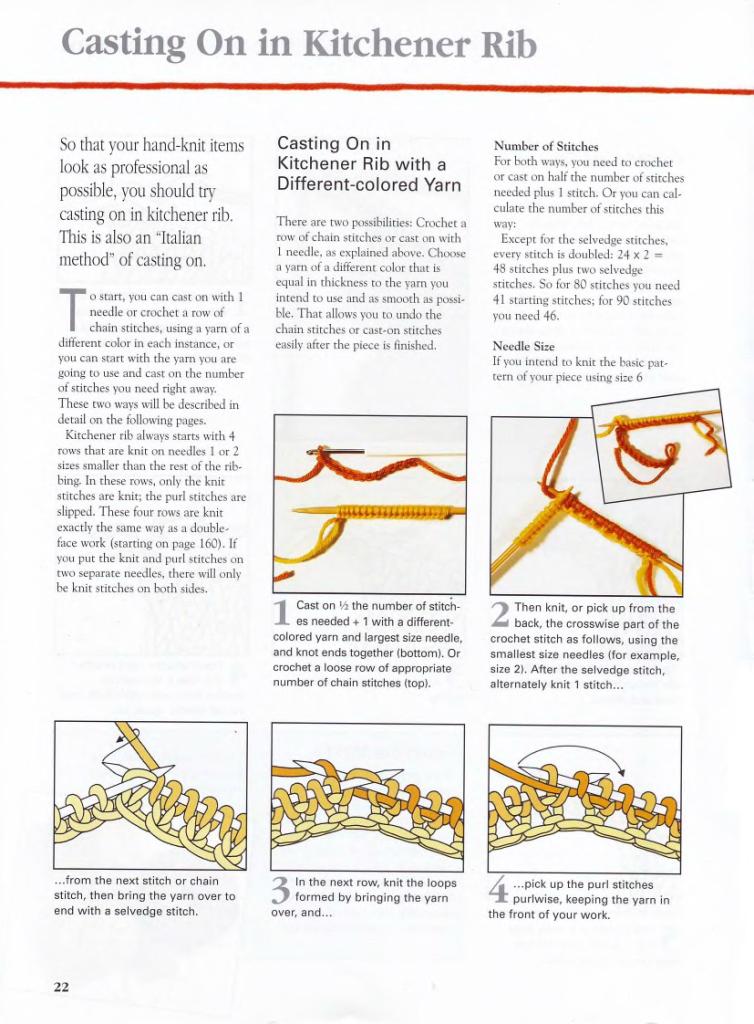
Casting On in Kitchener Rib
So that your hand-knit items look as professional as possible, you should try casting on in kitchener rib. This is also an italian methocT of casting on.
To start, you can cast on with 1 needle or crochet a row of chain stitches. using a yarn of a JtlTcrent color in each instancc, or you can start with the yam you are golng to usc and cast on the number ot srirches you need righr away.
Th esc two ways will be JcscribeJ m dctail on the tollowing pnges.
Kitchener rib always starts with 4 rows thar are knit on needles 1 or 2 si:es sniallcr dian the rest of the rib-bing- In these rows, only the knit stitchcs are knit; the purl stitchcs are slipped. These four row> are kni* exactlv the same way as a double -face work (starting on page 160). If you put the knit and pud stitchcs on two separare needles, there will only be knit stitchcs on both sides.
Casting On in Kitchener Rib with a Different-colored Yarn
There are two possibilirtes: Crochct a row of chain stitchcs or cast on with I needle. as explained above. Ghoosc a yarn of a different color that is equal in thickness to the yarn you intend to usc and as smooih as possible. Thar allows you to undo the chain stitchcs or cast-on stitchcs easiły after the piece is tinished.
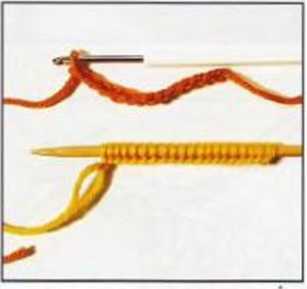
ICast on l : the number of stitch-es needed ♦ 1 with a different-colored yarn and largest size needle. and knot ends together (bottom). Or crochet a loose row of appropriate number of chain stitchos (topi.
Number of Stitches
For borh ways. you need to crochci or cast on halt the number of srirches needed plus 1 stitch. Or you can cal-culare rhe number of srirches this way:
txcept tor the sclvedge stitches. every stitch is doubled: 24 X 2 =
48 stitches plus two selyedge srirches. So !t>r 80 stitchcs you need 41 starting stitches; for 90 stitches you need 46.
Needle Size
If you intend to knit the basie paltem of your piece using size 6
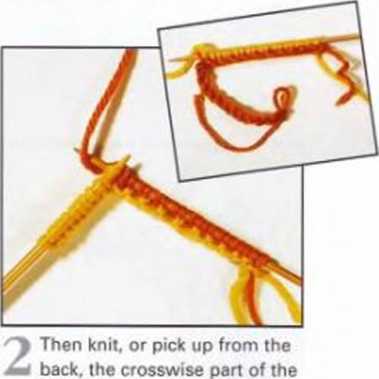
crochet stitch as follows, using the smallest size needles (for example, size 2). After the selvedge stitch. alternately knit 1 stitch...
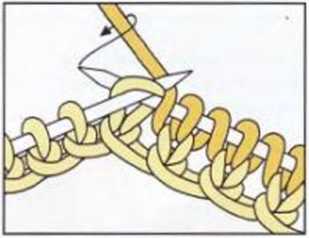
, .:rom the next stitch or choin stitch, then bring the yarn over to end with a selvedge stitch.
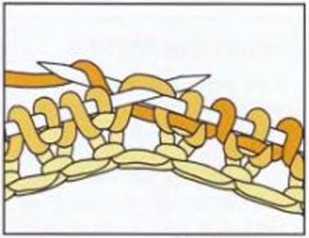
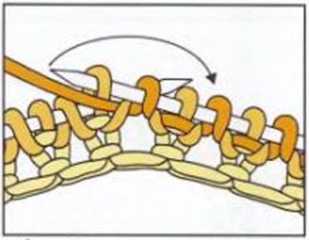
3 In tho next row, knit the loops formed by bringing the yarn over, and...
4...pick up the purl stitches purlwise. keeping the yarn in the front of your work.
22
Wyszukiwarka
Podobne podstrony:
Casting On in Kitchener Rib needles, you should also use size 6 nccdlcs for casting on thc first row
Binding Off in Kitchener Rib TIP Always make surę that your yarn end is long enough for binding
dpp62b in horizontal linę with your shoulder. Now hołd the beli out side-ways so that your left arm
writing wczesnoszkolna12 7. Art-work. Illustrations for the typed/word-processed b
writing wczesnoszkolna24 7. Art-work. Illustrations for the typed/word-processed b
Binding Off in Kitchener Rib try needle into both stitches at the same time. Allow the stitch. or 2&
Basic Technique$Binding Off in Kitchener Rib for 2x2 Ribbing Since binding ołt in kitchener rib
writing wczesnoszkolna12 7. Art-work. Illustrations for the typed/word-processed b
writing wczesnoszkolna24 7. Art-work. Illustrations for the typed/word-processed b
38 Sociełe des Nations — Recueil des Traites. 1933 4. In reąuesting that Your Excellency will b
Casting On The first stitch is now on the needlo in your right hand. Now insert the needlo into
Ensure that your students have a deep and thorough knowledge of the concepts covered in your ec
PROGRAM ROZWOJOWY^1 POLITECHNIKI WARSZAWSKIEJ By adjusting the turn-on and turn-off angles so that t
ipe 46 T 91. Double the ropę loop so that you hołd the upper pole at your thi
PROGRAM ROZWOJOWY^1 POLITECHNIKI WARSZAWSKIEJ By adjusting the turn-on and turn-off angles so that t
Honey x Honey Drops v04?4 8 YOU CAN"T PO TVWT/ I LL BE FINE/ VII TRy TO HOLP ON IN TWEor
727 (3.18) By setting z = [F(y)]1/0 in (3.18), we find that On substituting the above expression of
więcej podobnych podstron